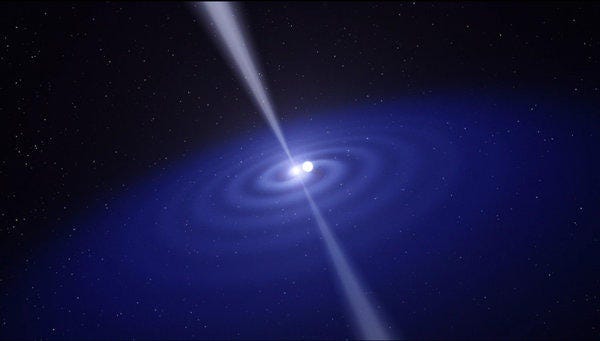Q1. What Is A Pulsar?
A 'pulsar' is a highly magnetized rotating star (usually 'neutron star' but also 'white dwarf') that emits beams of 'electromagnetic radiation' out of its 'magnetic poles'. This radiation can be observed only when a beam of emission is pointing toward Earth and is responsible for the pulsed appearance of emission.

Most 'neutron stars' are observed as 'pulsars'. 'Pulsars' are rotating 'neutron stars' observed to have pulses of radiation at very regular intervals that typically range from milliseconds to seconds. 'Pulsars' have very strong 'magnetic fields' which funnel jets of particles out along the two 'magnetic poles'.
'PSR J0108-1431' is the closest 'pulsar' to us. It lies in the direction of the 'Cetusconstellation' at a distance of about 280 light years.
Q2. How Does 'Pulsar Stars' Form?
A 'pulsar' is formed when a massive star collapses when supply of its fuel is ended. It blasts out in a giant explosion called supernova.
'PSR J1748−2446ad' is the fastest-spinning 'pulsar' ever discovered. It rotates 716 times per second. This pulsar was discovered by Jason W.T. Hessels of 'McGill University' on November 10, 2004 and confirmed on January 8, 2005.








No comments:
Post a Comment